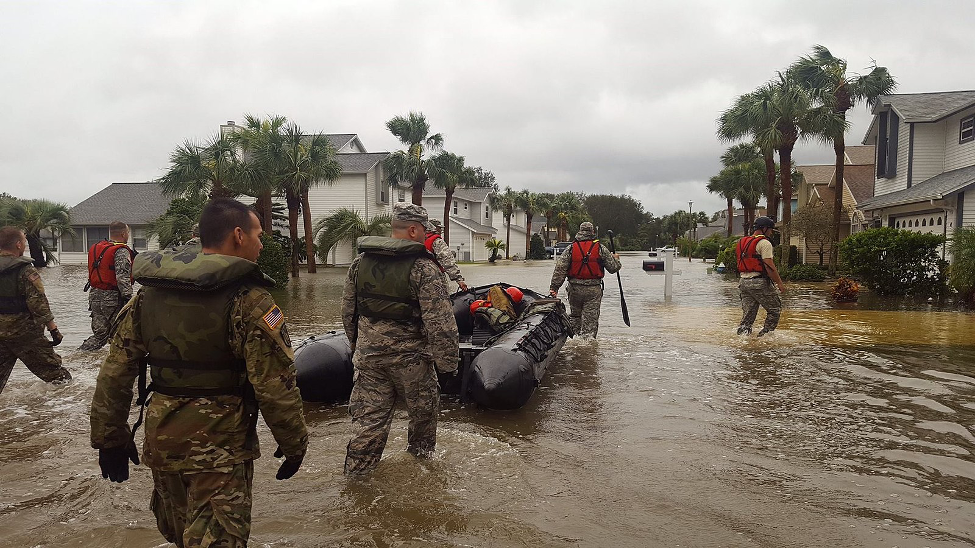Floridians may be forced to pay the price for rising sea levels surrounding the state—literally—as flood insurance premiums are expected to rise significantly in 2021.
The National Flood Insurance Program, which is administered by the Federal Emergency Management Agency and provided by a network of national and regional insurance companies, will be implementing a new method of flood risk assessment beginning Oct. 1.
The new rating system, called Risk Rating 2.0, is intended to generate premiums “that are fair, make sense, and easier to understand and better reflect a property’s unique flood risk.” It utilizes modern technology and industry practices to analyze individual properties’ flood risk and calculate more accurate rates for policyholders.
While FEMA notes that Risk Rating 2.0 will provide rates that are easier for homeowners to understand, the chief beneficiaries of the new methodology seem to be insurance providers who will be able to charge more specific premiums that incur less risk on their side.
Florida will likely be impacted by the change more than any other state. According to the Insurance Information Institute, Floridians hold more than 1.7 million NFIP-backed policies, almost exactly one-third of the program’s nearly 5.2 million policies nationwide. Miami-Dade County alone holds more policies than the entire state of California.
In November 2019, Rep. Charlie Crist, D-Fla., with then Reps. Francis Rooney, R-Fla., and Debbie Mucarsel-Powell, D-Fla., were among the leaders of a nationwide coalition to demand affordable premiums in response to the upcoming changes to NFIP’s price methodology. Risk Rating 2.0 was deferred a year from its original implementation date of October 2020, due in large part to bipartisan political blowback.
Their main concern was the significant price hikes that may occur when the policy is put in place, hikes that a new report by First Street Foundation suggests are necessary.
First Street is a nonprofit research group that studies floods, the most expensive natural disaster in the U.S. Their latest research emphasizes the cost of climate change on property values, a cost that will be high in Florida.
The Miami Herald reports that the study shows Florida residents, especially those living in coastal areas (more than three-quarters of the population), should be paying significantly higher rates due to the flood risk in their areas—on average, a staggering 379% more in the most flood-prone zones. Roughly one million homes in the state are paying less than a quarter of the true cost to insure their property.
The concerns of Crist, Rooney, Mucarsel-Powell and their House colleagues are imminent for Florida homeowners.
The last time the federal government attempted such a significant reform of flood insurance pricing was in 2012 with the Biggert-Waters Flood Insurance Reform Act. Biggert-Waters led to sudden, overwhelming increases in flood insurance rates that prompted Congress to reverse course and repeal parts of the law just two years later in 2014.
This time, there is a statutory cap on premium increases at 18%, but other surcharges and fees are not included in the cap. The average expected increase for renewal premiums is 11.3% and 14.9% for preferred risk policies.
FEMA has not published the exact methodology for Risk Rating 2.0, leaving uncertainty about how close First Street’s estimates will be to the new NFIP rates.
USA Today reported that the agency clarified no private sources have access to Risk Rating 2.0, and therefore their estimates cannot be verified. However, First Street is confident that its modeling approach is comparable to the strategies FEMA will use.
While the exact impacts of Risk Rating 2.0 will remain unclear until at least October 2021, First Street’s analysis proves that as sea levels rise, so will the prices Floridians have to pay for protection. The rate hikes that lawmakers anticipate from Risk Rating 2.0 are just one of the mundane yet tangible impacts climate change is expected to have on Florida residents in the coming years.
Riviera Beach attorney and environmental activist Jim Carroll notes in the Orlando Sentinel that flood insurance, property insurance and mortgage rates in Florida are already increasing, all while property values decline.
The imminent changes are a sobering warning that climate change will not only threaten the environment and ecosystems of Florida’s iconic coastlines, but will also become a substantial burden on residents’ pocketbooks.
Featured Image: Florida National Guardsmen conduct search and rescue missions during floods in St. Augustine in 2016. Unmodified photo by The National Guard used under a Creative Commons license. (https://bit.ly/3uQHiOX)
Check out other recent articles from the Florida Political Review here.





